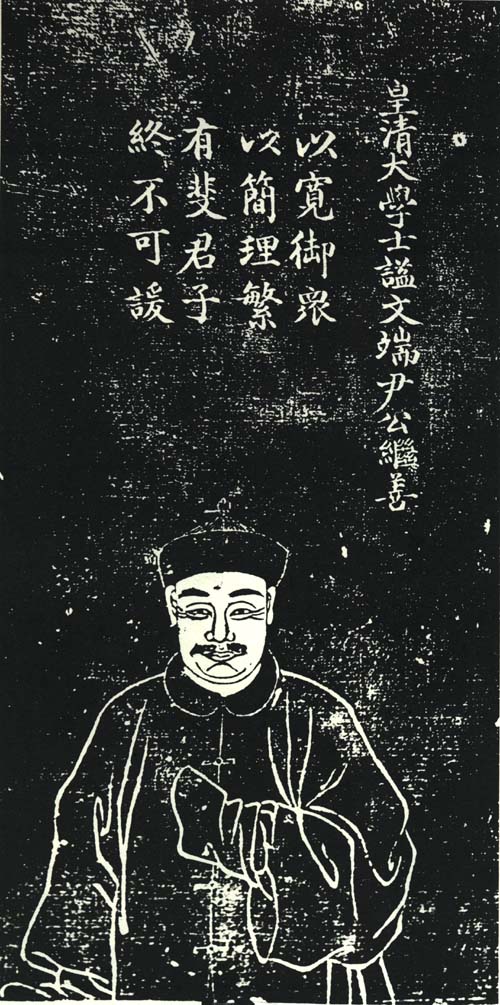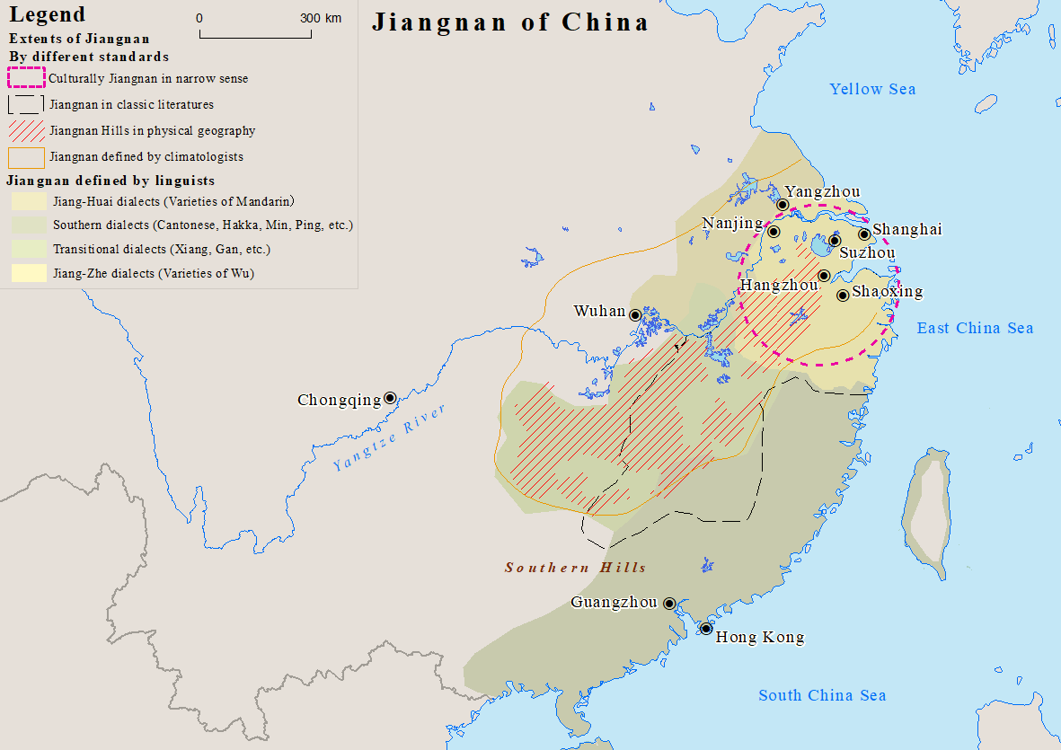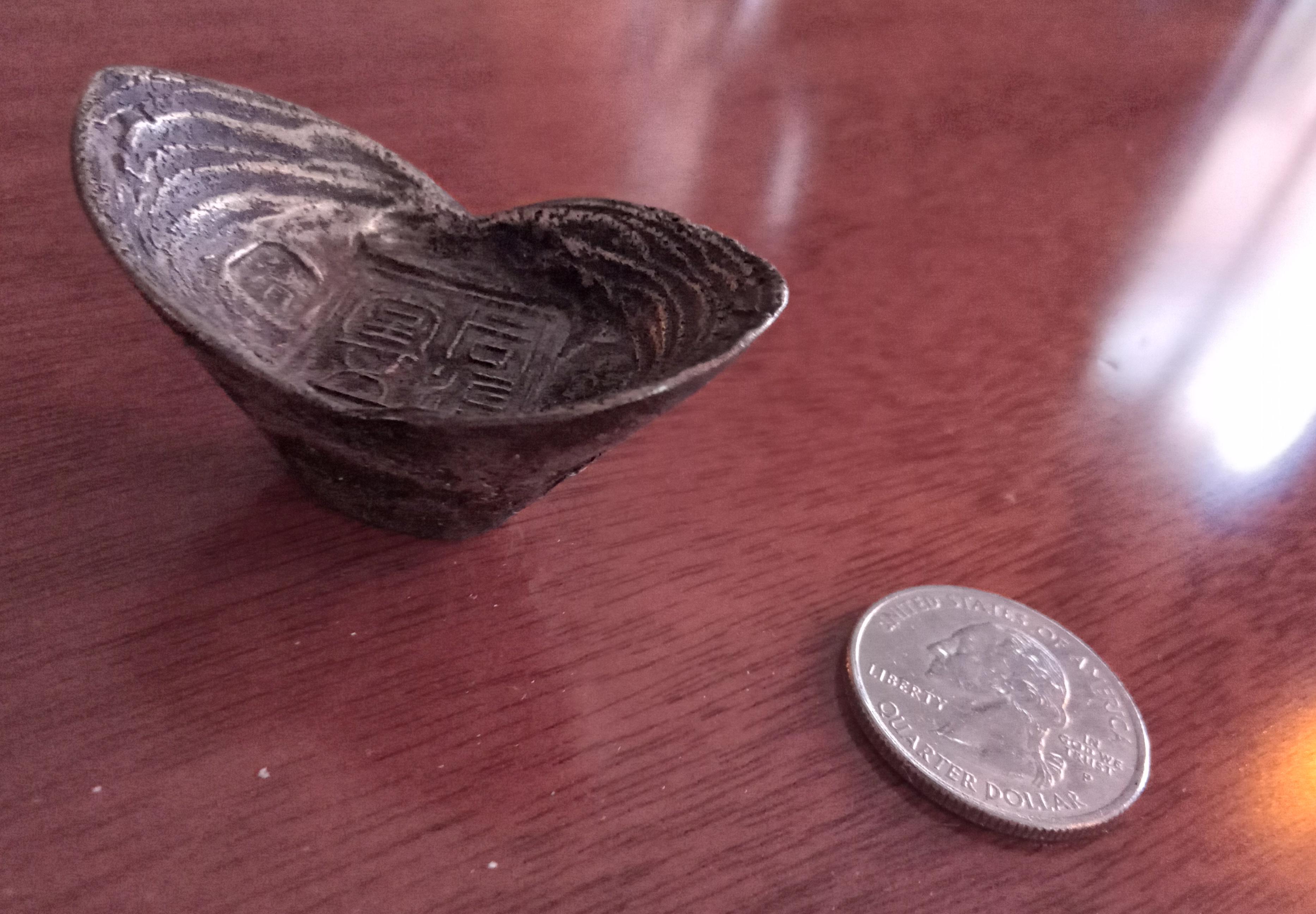|
Viceroy Of Southern Rivers
The Viceroy of Rivers and Waterways in Jiangnan Overseeing Military Affairs, better known simply as the Viceroy of Southern Rivers or Viceroy of Southern Rivers and Waterways, was a government office in China proper during the Qing dynasty. The office was based in Qingjiangpu (清江浦), which is now a district of Huai'an City, Jiangsu Province. The Viceroy usually held the rank of a deputy first-grade official or a regular second-grade official. The Viceroy was in charge of dredging and embankment projects in the waterways of Jiangsu Province. History The office of Viceroy of Rivers and Waterways was created in the early Qing dynasty. In 1677, during the reign of the Kangxi Emperor, Jin Fu ''Jìn Fǔ'', 16331692) served as the Viceroy of Rivers and Waterways and his headquarters were in Jining, Shandong Province. As Huai'an, Jiangsu Province was near the intersection of the Yellow River, Huai River and Grand Canal, the waterworks in that area became of prime importance. ... [...More Info...] [...Related Items...] OR: [Wikipedia] [Google] [Baidu] |
Jiangnan
Jiangnan or Jiang Nan (; formerly romanized Kiang-nan, literally "South of the River" meaning "South of the Yangtze") is a geographic area in China referring to lands immediately to the south of the lower reaches of the Yangtze River, including the southern part of its delta. The region encompasses the city of Shanghai, the southern part of Jiangsu Province, the southeastern part of Anhui Province, the northern part of Jiangxi Province and the northern part of Zhejiang Province. The most important cities in the area include Anqing, Changzhou, Hangzhou, Nanjing, Ningbo, Shaoxing, Suzhou, Wuxi, Wenzhou, and Zhenjiang. Jiangnan has long been regarded as one of the most prosperous regions in China due to its wealth in trade and very high human development. Most people of the region speak Wu Chinese dialects as their native languages. Etymology The word Jiangnan is based on the Chinese name for the Yangtze, ''Cháng Jiāng'', and ''nán'' meaning "south." In the 19th century, ... [...More Info...] [...Related Items...] OR: [Wikipedia] [Google] [Baidu] |
Yongzheng Emperor
, regnal name = , posthumous name = Emperor Jingtian Changyun Jianzhong Biaozhen Wenwu Yingming Kuanren Xinyi Ruisheng Daxiao Zhicheng Xian()Manchu: Temgetulehe hūwangdi () , temple name = Shizong()Manchu: Šidzung () , house = Aisin Gioro , dynasty = Qing , father = Kangxi Emperor , mother = Empress Xiaogongren , religion = Tibetan Buddhism The Yongzheng Emperor (13 December 1678 – 8 October 1735), also known by his temple name Emperor Shizong of Qing, born Yinzhen, was the fourth Emperor of the Qing dynasty, and the third Qing emperor to rule over China proper. He reigned from 1722 to 1735. A hard-working ruler, the Yongzheng Emperor's main goal was to create an effective government at minimal expense. Like his father, the Kangxi Emperor, the Yongzheng Emperor used military force to preserve the dynasty's position. Although Yongzheng's reign was much shorter than that of both his father (the Kangxi Emperor) and his son (the Qianlong Emperor), the Yongzheng era ... [...More Info...] [...Related Items...] OR: [Wikipedia] [Google] [Baidu] |
Dongming County
Dongming County in Heze Prefecture is the westernmost county of Shandong Province in the People's Republic of China. It borders Henan Province to the west across the Yellow River. Dongming County had a population of 677,563 in 1999. History Most of Dongming County formerly formed part of Yuanqu County, which was abolished in the 12th century after a Yellow River flood destroyed its county seat. In the early 20th century, the county was part of Zhili. Later, the area came under the jurisdiction of Henan. From April 1963, the county became part of Shandong Shandong ( , ; ; alternately romanized as Shantung) is a coastal province of the People's Republic of China and is part of the East China region. Shandong has played a major role in Chinese history since the beginning of Chinese civilizati .... Within Yuanqu County, the town of Zhuzao ( ''Zhǔzǎochéng'') was located within present-day Dongming County. Administrative divisions Dongming County includes seven towns, ... [...More Info...] [...Related Items...] OR: [Wikipedia] [Google] [Baidu] |
Changyuan County
Changyuan () is a county-level city in the east of Henan province, China, bordering Shandong province to the east. Formerly under the administration of the prefecture-level city of Xinxiang, since 1 January 2014 it has been directly administered by the province. Administration Subdistricts: * Puxi Subdistrict (), Pudong Subdistrict (), Nanpu Subdistrict (), Pubei Subdistrict () Towns: * Dingluan (), Xiangxiang (), Weizhuang (), Naoli (), Changcun (), Zhaodi (), Menggang (), Mancun () Townships: *Lugang Township Lugang or Lukang may refer to: * Lugang, Shantou (胪岗镇), a town in Chaonan District, Shantou, Guangdong, People's Republic of China * Lugang station (芦港站), a railway station in Ningbo City, Zhejiang Province, People's Republic of Chin ... (), Miaozhai Township (), Fangli Township (), Wuqiu Township (), Shejia Township (), Zhangsanzhai Township () Climate Economy Changyuan is an important industrial base. Most notably the city has a productio ... [...More Info...] [...Related Items...] OR: [Wikipedia] [Google] [Baidu] |
Henan
Henan (; or ; ; alternatively Honan) is a landlocked province of China, in the central part of the country. Henan is often referred to as Zhongyuan or Zhongzhou (), which literally means "central plain" or "midland", although the name is also applied to the entirety of China proper. Henan is a birthplace of Han Chinese civilization, with over 3,200 years of recorded history and remained China's cultural, economic and political center until approximately 1,000 years ago. Henan Province is home to many heritage sites, including the ruins of Shang dynasty capital city Yin and the Shaolin Temple. Four of the Eight Great Ancient Capitals of China, Luoyang, Anyang, Kaifeng and Zhengzhou, are in Henan. The practice of tai chi also began here in Chen Jia Gou Village (Chen style), as did the later Yang and Wu styles. Although the name of the province () means "south of the ellowriver.", approximately a quarter of the province lies north of the Yellow River, also known as the Hu ... [...More Info...] [...Related Items...] OR: [Wikipedia] [Google] [Baidu] |
Lankao County
Lankao County () is a county of Kaifeng, Henan, China. It has an area of and a population of 760,000. It was the site of the Battle of Lanfeng during the Second Sino-Japanese War. Administrative divisions As 2012, this county is divided to 5 towns and 11 townships. ;Towns ;Townships Climate Transportation *China National Highway 220 China National Highway 220 (G220) runs from Binzhou, Shandong to Zhengzhou, Henan. It is 585 kilometres in length and runs southwest from Binzhou towards Zhengzhou. Route and distance See also * China National Highways External linksOfficial ... * Lankao South Railway Station References External linksOfficial website of Lankao Government County-level divisions of Henan Kaifeng {{Henan-geo-stub ... [...More Info...] [...Related Items...] OR: [Wikipedia] [Google] [Baidu] |
Xianfeng Emperor
The Xianfeng Emperor (17 July 1831 – 22 August 1861), or by temple name Emperor Wenzong of Qing (), given name Yizhu (), was the eighth Emperor of the Qing dynasty, and the seventh Qing emperor to rule over China proper, reigned from 1850 to 1861. During his reign, the Qing dynasty experienced several wars and rebellions including the Taiping Rebellion, Nian Rebellion, and Second Opium War (Arrow War). He was the last Chinese emperor to have authoritarian and total executive ruling power. After his death, the Qing government was controlled by Empress Dowager Cixi. Family and early life Yizhu was born in 1831 at the Old Summer Palace, eight kilometres northwest of Beijing. He was from the Manchu Aisin Gioro clan, and was the fourth son of the Daoguang Emperor. His mother was the Noble Consort Quan, of the Manchu Niohuru clan, who was made Empress in 1834, and is known posthumously as Empress Xiaoquancheng. Yizhu was reputed to have an ability in literature and administrati ... [...More Info...] [...Related Items...] OR: [Wikipedia] [Google] [Baidu] |
Embezzlement
Embezzlement is a crime that consists of withholding assets for the purpose of conversion of such assets, by one or more persons to whom the assets were entrusted, either to be held or to be used for specific purposes. Embezzlement is a type of financial fraud. For example, a lawyer might embezzle funds from the trust accounts of their clients; a financial advisor might embezzle the funds of investors; and a husband or a wife might embezzle funds from a bank account jointly held with the spouse. The term "embezzlement" is often used in informal speech to mean theft of money, usually from an organization or company such as an employer. Embezzlement is usually a premeditated crime, performed methodically, with precautions that conceal the criminal conversion of the property, which occurs without the knowledge or consent of the affected person. Often it involves the trusted individual embezzling only a small proportion of the total of the funds or resources they receive or co ... [...More Info...] [...Related Items...] OR: [Wikipedia] [Google] [Baidu] |
Tael
Tael (),"Tael" entry at the . also known as the tahil and by , can refer to any one of several used in and |
Battalion
A battalion is a military unit, typically consisting of 300 to 1,200 soldiers commanded by a lieutenant colonel, and subdivided into a number of companies (usually each commanded by a major or a captain). In some countries, battalions are exclusively infantry, while in others battalions are unit-level organizations. The word battalion came into the English language in the 16th century from the French language ( French: ''bataillon'' meaning "battle squadron"; Italian: ''battaglione'' meaning the same thing; derived from the Vulgar Latin word ''battalia'' meaning "battle" and from the Latin word ''bauttere'' meaning "to beat" or "to strike"). The first use of the word in English was in the 1580s. Description A battalion comprises two or more primary mission companies which are often of a common type (e.g., infantry, tank, or maintenance), although there are exceptions such as combined arms battalions in the U.S. Army. In addition to the primary mission companies, a battal ... [...More Info...] [...Related Items...] OR: [Wikipedia] [Google] [Baidu] |
Subprefecture
A subprefecture is an administrative division of a country that is below prefecture or province. Albania There are twelve Counties of Albania, Albanian counties or prefectures, each of which is divided into several Districts of Albania, districts, sometimes translated as subprefectures. :Examples: District of Korçë, District of Sarandë Brazil In Brazil the subprefectures ( pt, subprefeituras) are administrative divisions of some big cities, such as São Paulo and Rio de Janeiro. The head of a subprefecture, the ''subprefeito'', is indicated by the municipality's mayor (in Brazil called ''prefeito''). In São Paulo there are 32 subprefectures. The largest in total area, subprefecture of Parelheiros, Parelheiros, covers 353.5 km2, and the most populous, Subprefecture of Capela do Socorro, Capela do Socorro, has more than 600,000 inhabitants. Burkina Faso Example: Djibasso Subprefecture Central African Republic Chad Examples: N'Gouri Subprefecture, Massakory Subprefec ... [...More Info...] [...Related Items...] OR: [Wikipedia] [Google] [Baidu] |
Circuit (administrative Division)
A circuit ( or ) was a historical political division of China and is a historical and modern administrative unit in Japan. The primary level of administrative division of Korea under the Joseon and in modern North and South Korea employs the same Chinese character as the Chinese and Japanese divisions but, because of its relatively greater importance, is usually translated as province instead. China Circuits originated in China during the Han dynasty and were used as a lower-tier administrative division, comparable to the county (, also translated as "districts"). They were used only in the fringes of the empire, which were either inhabited primarily by non-Han Chinese peoples or too geographically isolated from the rest of the Han centers of power. The system fell into disuse after the collapse of the Western Jin dynasty. The administrative division was revived in 627 when Tang Emperor Taizong made it the highest level administrative division and subdivided China into ten ... [...More Info...] [...Related Items...] OR: [Wikipedia] [Google] [Baidu] |




